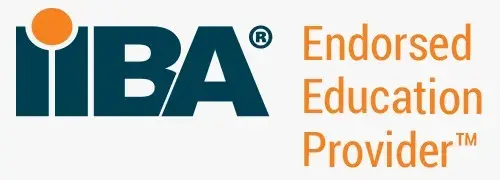How to clear the PMP Exam in 45 days?
Are you eager to clear the Project Management Professional (PMP) exam within a short time frame of 45 days? In this blog, we provide a comprehensive guide to help you achieve this ambitious goal. We will walk you through a structured plan, study techniques, recommended resources, and tips to optimize your preparation. With our expert guidance, you can confidently navigate the PMP exam and pave the way for your success as a certified PMP professional.
Mastering the PMP exam requires strategic planning and effective study strategies. Our blog is designed to provide you with a step-by-step approach to clearing the exam in just 45 days. We will cover essential topics such as understanding the exam structure, creating a study schedule before, during and after the exam and earning PMP credentials. By following our guidance and dedicating focused effort, you can maximize your chances of passing the PMP exam and taking a significant leap in your project management career.
Creating a well-structured study plan for PMP Exam success in 45 days
To help others who may be preparing for the PMP exam through the online proctor format, the individual wanted to share his personal experience and preparation plan. Over a period of 1.5 months, while working his day job, he conducted thorough research to understand the exam requirements and format. With this in mind, he developed an effective preparation plan that allowed him to pass the exam with confidence.
Please note that for this plan, we need not:
- Sit in a classroom for whole days
- Undertake intense full-day study sessions
- Take additional study leave
Step 1: Checking eligibility (0.5 Day)
The first step in preparing for the PMP exam is to ensure that you meet the eligibility requirements. This is an important hurdle to pass before committing to anything else. To be eligible for the exam, you must have 36 months of project management experience if you hold a degree or 60 months if you do not hold a degree. This experience must involve leading projects in a real-world work setting. Take the time to thoroughly review your work history and ensure that you meet the necessary requirements before moving forward with your preparation plan.
Source: https://www.pmi.org/certifications/project-management-pmp (How to get your PMP section)
It's important to note that having the title of Project Manager is not a requirement for meeting the project management experience eligibility criteria for the PMP exam. However, it is necessary to have played a leading role in projects where you were not just executing tasks, but also responsible for leading the project in some capacity. It's crucial to provide clear and detailed explanations of your project management experience, including each project phase, when applying for the exam. Trying to fabricate or exaggerate your experience is not recommended and can jeopardize your chances of passing the exam. Further details about this will be covered in Step 4 of the preparation plan.
Step 2: Register for a PMP prep course (0.5 Day)
To qualify for the PMP exam, the next step is to enroll in a course that provides 35 hours of education, also known as the Project Development Unit (PDU). It is crucial to select a high-quality course to ensure that you acquire the necessary knowledge to pass the exam successfully. With a plethora of options available online or in person, you can choose the one that suits your preferences.
Personally, individual opted for the PMP Certification Exam Prep by TechCanvass based on the overwhelmingly positive feedback from numerous students and its affordable cost. Since it is an online course, he has the flexibility to study at any time and place that is convenient for him. This setup is much better than having to attend physical classes for several days and cramming everything in a short period.
Step 3: Attend prep course and earn the 35 PDUs (9 Days)
Step 3 of the PMP certification process can be the most time-consuming, as it involves completing the 35-hours educational requirement. To accomplish this, individual developed a study schedule that allocated 30-minute to 1-hour slots each day to go through the course content before or after work.
On weekends, he dedicated 2-3 hour time slots each day to the course. Using the TechCanvass course, he could easily pick up from where he left off, as the instructor divided the course into small, manageable chunks. Though the course was designed to be completed in 35 hours, individual took more time to complete it, as he also took notes while studying. Upon completing the course, he received a certificate that serves as proof of completing the 35-hour educational requirement in case of an audit.
Step 4: Complete PMP application (3 days)
Once we have completed the 35-hour educational requirement, the next step is to apply for the PMP exam through the PMI website. During the application process, we will need to provide our academic education, including our degree, and professional education, such as the PMP exam prep course we have completed.
Step 5: Pay for the PMP Exam (0.5 Day)
The costliest step of the PMP certification process is paying for the exam. Once your application is approved, you can view it in your account (dashboard) under the Certification tab for PMP. There, you will find a button to proceed with the exam payment.
Step 6: Scheduling the Exam (0.5 Day)
After making the payment, you can schedule the PMP exam by selecting the online exam option provided by Pearson Vue online exam option provided by Pearson Vue. This exam can be taken from the comfort of your home, and you can choose any day and time that suits your schedule. Individual scheduled his on Saturday at noon, as he is most alert and focused during that time.
It is recommended that you schedule the exam at least two weeks ahead to allow yourself enough time to prepare. It is crucial to double-check that the name on your exam registration matches the name on your ID to avoid any issues during the ID check. Any spelling mistakes could result in the loss of the entire exam day, so it is essential to be vigilant.
Step 7: Study plan and exam preparation (30 Days)
Now is the time to review all the previous study materials and take some practice exams, as the actual PMP exam is a closed book test. To perform well, it is crucial to have a good understanding of the content. During the two weeks leading up to the exam, he completed three full 180-question practice exams and five domain mock exams. He recommends aiming for a minimum score of 75%, although the actual exam might be slightly more challenging, as it mostly consists of situational questions rather than literal ones.
He found TechCanvass' practice exams to be particularly helpful, as they are divided into separate domains, allowing me to identify areas that need more improvement. The full practice exam provided an excellent assessment of my preparedness for the actual exam.
Step 8: The Exam Day! (1 Day)
At last, we have reached the final step of the process. We have worked hard and studied diligently, and now it's time to put our knowledge to the test. The online PMP exam will take approximately four hours, and it is essential to be present at least 30 minutes before the exam start time. To prepare, he recommends allocating one hour to get settled into your preferred exam-taking spot within your home.
During the exam, a proctor will closely monitor us through chat or call, and it's important to take note of a few things to ensure a smooth exam-taking experience.
Before the exam
1. Clear your desk of all items, such as papers and stationery, and consider covering your monitor with a cloth.
2. Prepare a webcam to show the proctor the top, front, behind, left, and right of your exam area.
3. Ensure that no one will walk around your exam area during the test, as it may raise suspicion and disqualify you
4. Put your mobile phone on silent, and inform your contacts not to contact you unless it's an emergency. Keep it out of sight, but within reach in case the proctor needs to call you.
5. Prepare a container of beverages to keep you hydrated during the 4-hour exam. This is the only item allowed on your desk.
During the exam
1. Keep your face centered in the webcam during the exam to avoid receiving a warning from the proctor.
2. Do not read the exam questions aloud or move your mouth as it is not allowed and may trigger a warning from the proctor.
3. Two 10-minute break times will be provided, which will be triggered after answering 60 questions. Before notifying the proctor and taking the break, review the previous 60 questions thoroughly.
4. Remember that once the break is triggered, you cannot go back to the previous 60 questions, so review them carefully while keeping the remaining time in mind.
After the exam
1. After completing the exam, we can check our results immediately by logging into https://home.pearsonvue.com/pmi
2. The certification will become available in a few hours in our pmi.org account.
Final Step: Earn the PMP credential
After the certification is issued, we can rejoice and feel accomplished. However, it is important to note that the certification is valid for three years only, after which we need to renew it by earning 60 Professional Development Units (PDUs).
Hopefully, this guide will assist those who are currently researching the process of obtaining a PMP certification.
Study Materials for preparing for the PMP Exam
To effectively prepare for the PMP exam, it is essential to utilize reliable study materials that cover the necessary concepts and provide comprehensive practice. Here are some recommended study materials that can greatly support your PMP exam preparation:
- PMBOK Guide: The Project Management Body of Knowledge0 (PMBOK) Guide is a fundamental resource for PMP exam preparation. It provides a detailed framework of project management processes, knowledge areas, and best practices. Familiarize yourself with the content of this guide as it forms the basis of the PMP exam.
- PMP Prep Book: Invest in a reputable PMP exam preparation book that offers in-depth coverage of the exam syllabus. These books often provide additional explanations, examples, and practice questions to reinforce your understanding of key concepts.
- Online PMP Exam Workshops: Participating in online PMP exam workshops can provide valuable guidance and insights into exam preparation strategies. These workshops offer interactive sessions, expert advice, and practical tips to enhance your exam readiness.
- Online PMP Simulators: Utilize online PMP simulators to simulate the exam environment and practice answering exam-style questions. These simulators offer a wide range of practice questions and allow you to gauge your performance and identify areas for improvement.
- Flashcards: are an effective tool for memorizing key definitions, formulas, and concepts. Create your own flashcards or use online flashcard resources to reinforce your knowledge and recall important information during the exam.
Additionally, we offer our comprehensive PMP Question Bank, designed to assist you in your exam preparation. Our question bank consists of over 2000 practice questions, quizzes, mind maps, and drills. It includes chapter-wise and full-length tests, allowing you to assess your knowledge and progress. Our simulator application enables you to evaluate your performance and analyze your strengths and weaknesses as you progress through the question bank.
Conclusion
In conclusion, clearing the PMP Exam in just 45 days requires careful planning, dedication, and the right study materials. By following a well-structured study plan and utilizing resources such as the PMBOK Guide, PMP prep books, online workshops, and the TechCanvass PMP Question Bank, you can prepare effectively and approach the exam with confidence.
If you're ready to start your PMP exam preparation, consider enrolling in the TechCanvass PMP Certification Course. With comprehensive study materials, expert guidance, and a focus on exam success, this course will equip you with the knowledge and skills needed to excel in the PMP Exam. Don't miss out on this opportunity to enhance your project management career. Enroll today.




